Davis Echomaster Radar Reflector Handleiding
Davis
Scheepsradar
Echomaster Radar Reflector
Bekijk gratis de handleiding van Davis Echomaster Radar Reflector (7 pagina’s), behorend tot de categorie Scheepsradar. Deze gids werd als nuttig beoordeeld door 36 mensen en kreeg gemiddeld 4.3 sterren uit 18.5 reviews. Heb je een vraag over Davis Echomaster Radar Reflector of wil je andere gebruikers van dit product iets vragen? Stel een vraag
Pagina 1/7

INSTRUCTIONS
#152 Echomaster with
Anodized Plates
#156 Hanging Mount System
(no reflector)
Discontinued in 2014:
#153 Deluxe Hanging Echomaster
#157 Surface Mount System
Echomaster radar reflectors give ships a chance to see your boat in fog and low
visibility conditions—a must for serious boaters. Radar reflectors may be mount-
ed on a buoy or piling to help identify your dock or mooring in less than perfect
conditions. They are also used to supplement official markings on hazards to
navigation such as bridges, rocks, submerged trees, sunken boats.
#152
Echomaster Radar Reflector
Anodized aluminum plates. May be
assembled around a backstay, or
make your own bridle and hang
from holes drilled in corner latches.
#156 Hanging Mount System can
be purchased separately.
Make your boat visible…
find your way home…
mark hazards to navigation
#156
Hanging Mount System
Use to suspend unit from mast or
rigging in perfect “catch rain” posi-
tion. Reflector not included
®

Echomaster Specifications
Reflector plates are 12.5" (32 cm) diameter, circular.
Provide 13.2 square yards (12 sq. meters) of maxi-
mum effective radar cross section in the X or 3 cm
band (9–9.6 GHz frequency), based on optimum ori-
entation between the reflector and radar. Offer equiv-
alent radar cross section of conventional triangular
plate reflector with approximate 17" (43 cm) diagonal
dimension.
Plates are made of robust 0.05" (1.3 mm) marine
grade aluminum; sufficient thickness to minimize flex-
ing. Dimples in plates allow corner latches to attach
precisely, minimizing angular distortion.
Windage holes reduce aerodynamic drag and allow
assembly of the reflector around a backstay.
Windage hole size 1.25" (32 mm).
Captive corner latches are tough, injection molded
plastic to assure minimum angle error. Corner latches
allow reflector to be quickly and easily assembled
and demounted. Reflector stows flat.
Weight without mounting hardware: 1.65 lbs. (.75 kg).
#156 mounting harness weighs 1.5 oz. (.4 kg).
The U.S. Coast Guard is considering marine radar
reflector requirements that would apply to pleasure
boats operating in waters of the United States.
Already such laws exist in many other countries such
as the United Kingdom, Canada and Germany.
In distress situations the Coast Guard can be materi-
ally aided in search and rescue by the deployment of
a good radar reflector.
Echomaster’s superiority is proven. It was ranked
“the best radar reflector” and one of the top ten sail-
ing products by . SRI rated Echo- Practical Sailor
master “superior” after the most rigorous tests ever
conducted on radar reflectors, some costing 10 times
as much.
How a Ship’s Radar Sees Your Boat
The radar of a ship making a complete circle around
a boat would hit the boat’s radar reflector from all
angles. If the boat were stationary and we plotted
how strong the reflected signal is at all angles, we
would arrive at such as performance diagrams
this…
The outside of the circle is what a 10
2
meter cross
section of a metallic sphere would reflect—the labo-
ratory standard. The larger the performance plot, the
better the radar reflector. Peaks in the pattern should
approach the laboratory standard and be uniformly
distributed 360° around the fixed reference point
(your boat). Valleys should be minimal in width. The
Davis reflectors show good balance: strong peaks,
narrow valleys. Other reflectors have inadequate
peaks or large areas of weak response, making them
seem smaller on an oncoming ship’s radar screen.
The radar display on a ship will typically show sur-
rounding conditions for at least 12 nautical miles (22
km), with gain and sea clutter controls for adjustment.
But boats of today, with fiberglass hulls and sleek
designs (curved or slanted surfaces reflect much
less), do not possess enough reflective qualities to
make them highly visible on a radar screen. The
response may be small, weak or intermittent. Even a
boat’s metal mast (a curved surface) and engine
(mounted low, in the realm of sea clutter) do not pos-
sess enough reflective qualities to make the boat
highly visible to radar. And container vessels and
tankers of today require long stopping time and wide
turning radius. Ensuring the detectability and recogni-
tion of your craft at a long distance from an overtak-
ing vessel under all weather and sea conditions is
critical to avoid disaster. Without a radar reflector (or
radar of your own) you’re left to peer into the fog or
darkness or listen for bells, foghorns, propellers, or
the mighty bowwave from an onrushing “skyscraper
of steel.” Even if you did spot them, which way would
you turn? Best to let them “see” you instead.
DAVIS
ECHOMASTER
#152
DAVIS
EMERGENCY
RADAR
REFLECTOR
#151
MOBRI RADAR
REFLECTOR
FIRDELL
BLIPPER
RADAR
FLAG
Admiralty surface weapons test, England

Positioning the Reflector
A cabin, deckhouse, sails, stacks, etc. have a “shad-
ow effect,” blocking a radar signal. To minimize this,
the reflector should be fitted as high as possible.
Height also helps eliminate the effect of heavy sea
and swell conditions which might otherwise blend the
observed signal into sea clutter on the radar display.
Echomaster is designed to mount in the “catch rain”
position by being suspended by the halyard/harness
system. Alternatively, Echomaster may be perma-
nently affixed to a mast structure.
To better illustrate the advantage that can be gained
by placing the radar reflector higher above the water,
study the table below.
REFLECTOR DISTANCE TO
HEIGHT RADAR HORIZON
5 ft. (1.5 m) 2.5 nautical miles (4.6 km)
10 ft. (3.1 m) 4.0 nautical miles (7.4 km)
15 ft. (4.6 m) 4.5 nautical miles (8.3 km)
20 ft. (6.1 m) 5.5 nautical miles (10.2 km)
25 ft. (7.6 m) 6.0 nautical miles (11.1 km)
30 ft. (9.1 m) 6.5 nautical miles (12.0 km)
35 ft. (10.7 m) 7.0 nautical miles (13.0 km)
Radar waves are bent from a straight line path toward the earth as
they travel outward from a ship’s antenna. Refraction, or bending,
is due to the density and water vapor content of the atmosphere,
allowing X band waves to travel about 6% beyond the optical or
line-of-sight horizon. Values in the table are approximate; reliable
detection ranges for common radar reflectors seldom equal the
radar horizon distances indicated above.
If you have a radar installation on your boat, it
may be necessary to keep the Echomaster reflector a
minimum distance away from the radar antenna. You
should consult with your radar dealer or manufacturer
to avoid possible damage to equipment or adverse
performance.
Avoiding shadowing by the sails is important. In the
diagram below, radar beams in the shaded sector are
not reflected well because the sails, if wet, shadow
the radar reflector. Higher mounting minimizes this.
In the “catch rain” position, Echomaster’s octahedral cluster orients
all panels at 20° to the axis of symmetry. At this angle, all the inner
pockets have the unique property of always reflecting a radar sig-
nal back to its originating source with high effectiveness. At the
same time, optimum 360° azimuth coverage is provided. The pock-
et pointing straight up will aid in airborne search and rescue opera-
tions.
Suspended by halyard
or harness. The orienta-
tion shown is the perfect
“catch rain” position.
Rigid mounting on a mast
structure using pipe fittings.
Simple instructions for such
a surface mount system are
given later in this document.
Product specificaties
| Merk: | Davis |
| Categorie: | Scheepsradar |
| Model: | Echomaster Radar Reflector |
Heb je hulp nodig?
Als je hulp nodig hebt met Davis Echomaster Radar Reflector stel dan hieronder een vraag en andere gebruikers zullen je antwoorden
Handleiding Scheepsradar Davis
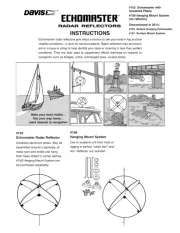
7 Mei 2025
Handleiding Scheepsradar
Nieuwste handleidingen voor Scheepsradar
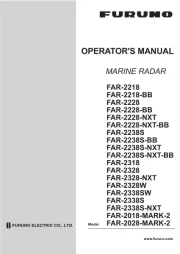
22 Juli 2025
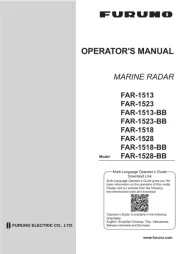
22 Juli 2025

22 Juli 2025
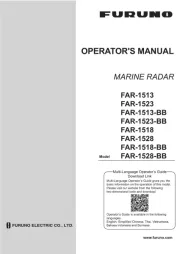
22 Juli 2025
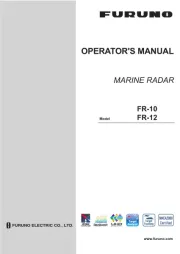
22 Juli 2025
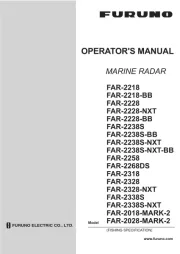
21 Juli 2025
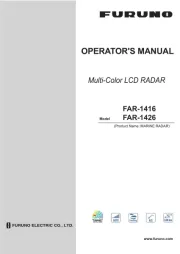
21 Juli 2025
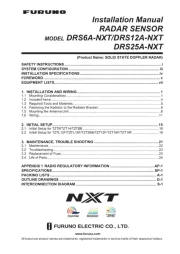
21 Juli 2025
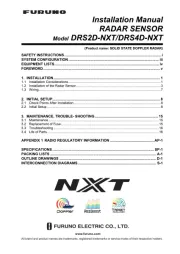
21 Juli 2025
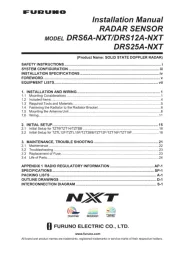
21 Juli 2025